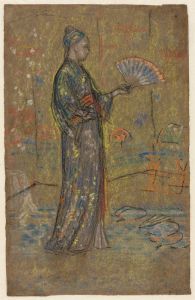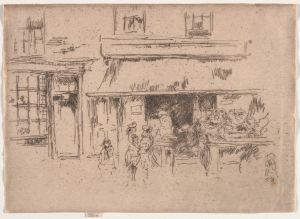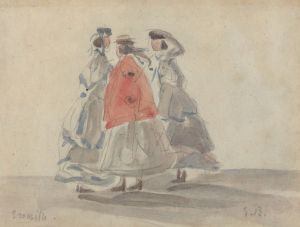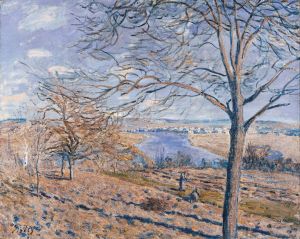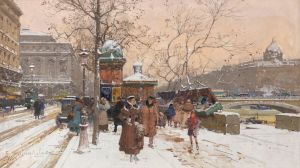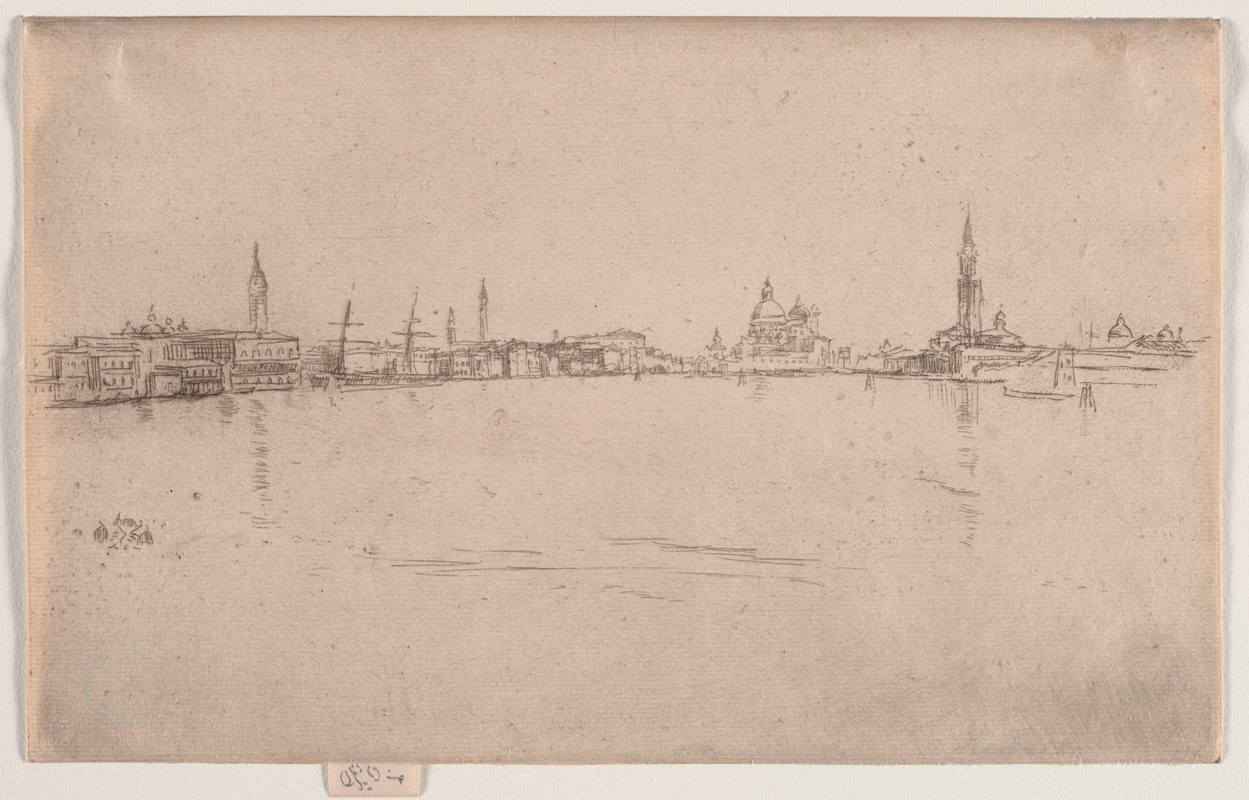
La Salute; Dawn
A hand-painted replica of James Abbott McNeill Whistler’s masterpiece La Salute; Dawn, meticulously crafted by professional artists to capture the true essence of the original. Each piece is created with museum-quality canvas and rare mineral pigments, carefully painted by experienced artists with delicate brushstrokes and rich, layered colors to perfectly recreate the texture of the original artwork. Unlike machine-printed reproductions, this hand-painted version brings the painting to life, infused with the artist’s emotions and skill in every stroke. Whether for personal collection or home decoration, it instantly elevates the artistic atmosphere of any space.
James Abbott McNeill Whistler was an American artist known for his significant contributions to the art world during the late 19th century. He is often associated with the Aesthetic Movement, which emphasized art for art's sake, focusing on beauty and visual harmony rather than narrative content. One of his lesser-known works is "La Salute; Dawn," which reflects his interest in capturing atmospheric effects and his skill in using color and composition to evoke mood.
"La Salute; Dawn" is part of Whistler's series of works that depict Venice, a city that captivated many artists with its unique light and architecture. Whistler visited Venice in 1879, initially as part of a commission to create a series of etchings. During his time there, he produced numerous paintings and pastels that captured the city's ethereal beauty. "La Salute; Dawn" is believed to be one of these works, showcasing Whistler's ability to convey the serene and mystical quality of Venice at dawn.
The painting likely depicts the Basilica di Santa Maria della Salute, a prominent and iconic church in Venice. This Baroque-style basilica, often simply referred to as "La Salute," is situated at the entrance to the Grand Canal and is one of the city's most photographed landmarks. Whistler's depiction of the basilica at dawn would have highlighted the soft, diffused light of early morning, a time when the city is enveloped in a tranquil atmosphere.
Whistler's technique in "La Salute; Dawn" would have involved his characteristic use of a limited color palette and delicate brushwork. He was known for his "tonal" approach, where subtle gradations of color and tone create a harmonious and balanced composition. This method allows the viewer to experience the mood and essence of the scene rather than focusing on intricate details. Whistler's Venice works, including "La Salute; Dawn," often feature a dreamlike quality, with misty and atmospheric effects that blur the boundaries between water, sky, and architecture.
The painting reflects Whistler's broader artistic philosophy, which prioritized the aesthetic experience over literal representation. He often titled his works with musical terms, such as "nocturne" or "symphony," to emphasize their compositional and tonal qualities. Although "La Salute; Dawn" does not explicitly carry a musical title, it aligns with this approach by focusing on the visual harmony and mood of the scene.
Whistler's time in Venice was a period of artistic renewal and experimentation. The works he produced there, including "La Salute; Dawn," were well-received and contributed to his reputation as a master of atmospheric and tonal painting. His Venice series remains an important part of his oeuvre, demonstrating his ability to capture the essence of a place through his unique artistic vision.
While specific details about "La Salute; Dawn" may be limited, the painting is a testament to Whistler's skill in conveying the beauty and atmosphere of Venice. It exemplifies his commitment to creating art that transcends narrative and focuses on the sensory experience, a hallmark of his enduring legacy in the art world.







